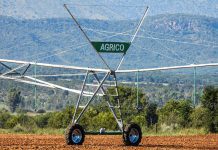‘Chances of using maize worth R1 900 per ton to produce ethanol at a profit are very slim.’
When worried maize farmers met at Loftus Versfeld in 2005, the man of the moment was Bothaviller Johan Hoffman. He had a solution to farmers’ problems – use the surplus maize to produce ethanol. Within months was established, plans were made for several bioethanol plants in the maize production areas, and there was even talk of a London Stock Exchange -listing.
Farmers, meanwhile, invested an alleged R24 million in the company, not directly though, but through another entity, Grain Alcohol Investments. Plans were also afoot to source BEE partners.
In July 2006 Hoffman told the press that building of the Bothaville plant would commence in the next few weeks, but nothing happened, and at the beginning of 2007 all material was removed from the Bothaville site. According to press statements they were “re-evaluating their model”. When negative reports started surfacing in Rapport newspaper, farmers started to get worried about their investment in Grain Alcohol Investments and the company was forced to hold an annual general meeting. Apparently the maize pledged by the farmers had been sold to a grain trader and the money transferred to Ethanol Africa which, being a private company, initially refused to furnish farmers with any information. Financial statements for the year to June 2006 were however provided to Grain Alcohol Investments in March, showing a cash surplus of R22 million in Ethanol Africa.
In spite of the adverse press statements, Johan Hoffman maintains all is well with Africa and that the first plant will still go online by July 2008.
Meanwhile, US bioethanol production has transformed the global maize market. The Chicago price of maize has increased from the 0 per ton of previous years to the current level of 8. Import parity is currently at R1 955 and July 2007 yellow maize is selling at 820. This is far above the price ranges used by the Bureau for Food and Agricultural Policy in its 2005 ethanol viability study. Chances of using maize worth 900 per ton (or 750 per ton, if one subtracts the transport differential) to produce ethanol at a profit are very slim.
The manufacture of bioethanol from maize seemed a good idea to farmers facing the very low prices of 2005, but at current prices and with the present uncertainty about the local harvest, it does not seem such a good idea any more.
The SA government has proposed a 8% ethanol blend with petrol which means that when government finally rolls out its biofuel’s policy, fuel companies will have no choice but to start sourcing ethanol. While there is a lot of ethanol available globally at relatively low prices, government will have to place a tariff on imported ethanol if the viability of a local bioethanol industry is to be assured. If weather gurus, who tell us farmers may face a La Niña situation in the coming summer, are correct, we may produce more maize during the 2007/08 season. Farmers will again have to evaluate their marketing strategies carefully.
Safex contracts and options are well-established methods of hedging prices and farmers should use these tools rather than commit to deliver maize to a yet-to-be-built factory at a fixed price. n the US, various ethanol plants are doing rather well, but their profitability is ensured by massive subsidies and high tariff barriers. South Africa, the government’s biofuels strategy is still, to quote biofuels spokesperson Fanie Brink, largely biased towards the fuel industry and not agriculture. Unless this policy changes, the viability of the African bioethanol industry remains doubtful.
According to Ethanol Africa, the total projected cost of the Bothaville plant has increased from R700 million to R1 billion. At the end of their 2006 financial year, Ethanol Africa had cash reserves of R22 million remaining from farmer’s -R24 million contribution, as well as investments by Sterling Waterford. However they now need to find investors willing to invest an additional R1 billion in the Bothaville plant. They will, think, find it more difficult to get hard-nosed financial institutions to invest money than it was to convince farmers to hand over silo certificates for maize that was supposedly destined for ethanol production. Dr Koos Coetzee is an agricultural economist at the MPO. All opinions expressed in this column are his own. |fw








